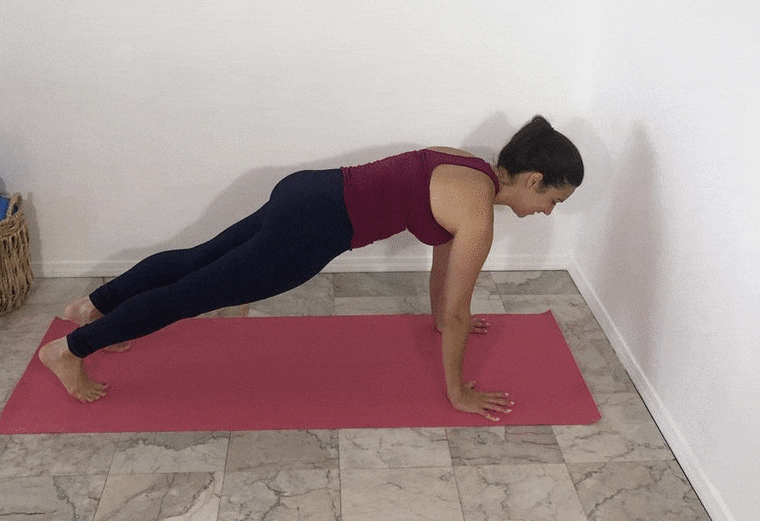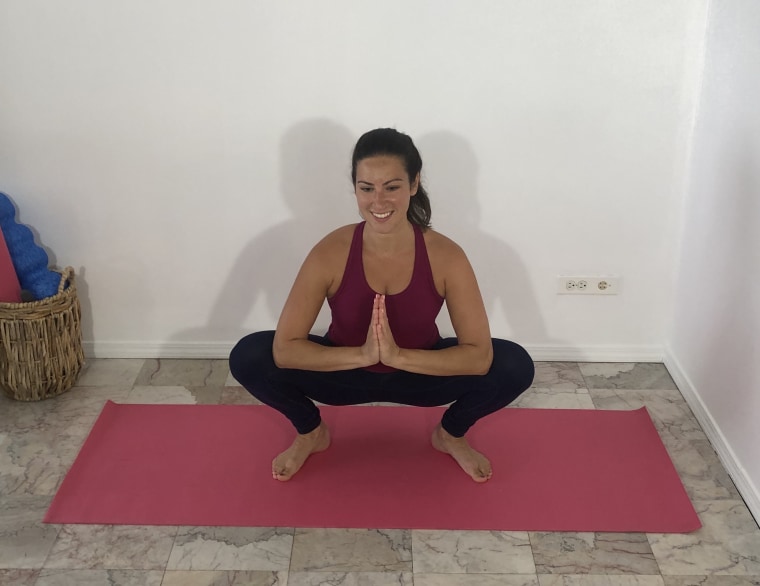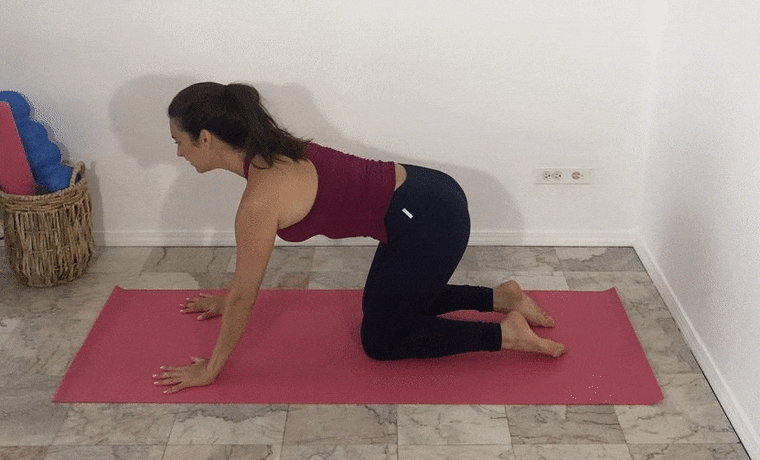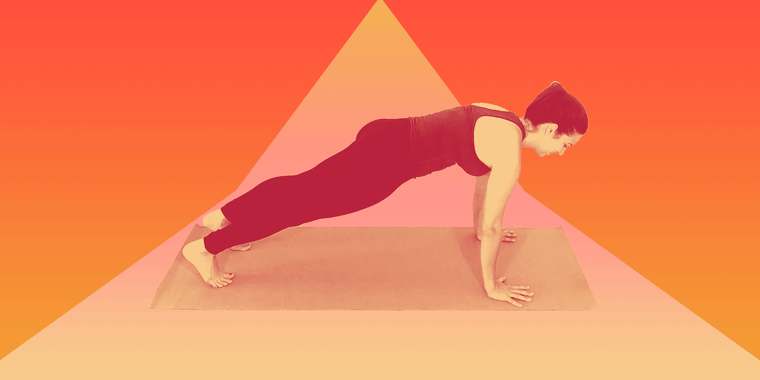Welcome to Start TODAY. Sign up for our Start TODAY newsletter to join the 30-day challenge and receive daily inspiration sent to your inbox.
Yoga has become much more mainstream over the past decade or so. While you once needed to attend a yoga class to see certain poses, they are now incorporated into many types of workouts. Think: as a part of the warm up or cool down during bootcamps and incorporated into ab routines.
Downward dog is one of those yoga exercises that has become a popular move. And for good reason: It is a great exercise to warm up the body and stretch the back.
However, unlike in most yoga classes, performing this move at home or as a part of another exercise program comes with little to no instruction. And while this move is a great one to incorporate into your routine, performing it without mastering the proper form comes with some risk.
Yoga moves require flexibility and if you’re still working on yours, jumping right in to a full downward dog isn’t the best plan of attack. Instead, build up your flexibility with modified versions and complementary exercises in order to ease your way into the full movement.
What are the health benefits of downward dog?
In general, yoga poses improve mental and physical health, helping to calm your mind while strengthening your muscles. Downward dog, more specifically, stretches the entire backside of your body at once, including the back, ankles, calves and hamstrings.
Downward dog is also helpful for relieving back pain, and performing it consistently can release stiffness and tension in the neck and back.
Like many other yoga poses, downward dog is a great move to drop into when you need to relax. It's a great way to release the tension that builds up after a long day spent staring at a screen or sitting at a desk.
The common mistakes people make when doing downward dog
It may seem simple, but downward dog is a move that requires a lot of attention to detail. I see many of my clients not putting enough distance between their hands and feet. This narrow position is not healthy for your back and can even cause strain, which is not what we want from a pain-relieving exercise.
People also tend to tuck in their butts while their legs are straight in downward dog. This puts your back in an unnatural shape while increasing the amount of stress on the hamstrings. This could lead to a pulled muscle or increased back pain. To correct this mistake when you perform downward dog, make these adjustments:
- If you feel like the space between your feet and your hands is too narrow, shift your feet back further.
- Instead of tucking in your butt, bend your knees just a little so that you can tilt your hips forward.
- To keep your spine in a neutral position, focus on pulling your chest toward your hamstrings.
How to do modified downward dog
Performing downward dog on the floor can be tricky. Since standing up is a more natural position, performing downward dog this way can be a big help in mastering the move.
- Find a wall and stand about 3 feet away from it (far enough that you can fully extend your arms in front of you).
- Place your hands on the wall at shoulder height with fingertips pointing upwards. Lean your body toward the wall on an angle while keeping your arms straight.
- Keeping your hands where they are, move your hips back while you begin to lower your head and torso toward the floor. Continue to move down as far as you can and hold that position while pulling in your stomach and breathing slowly.
- Continue to perform this exercise until you feel confident enough to take it to the ground.
How to perform downward dog correctly

If you’re confident in your flexibility and are ready to go for the full move, follow these steps:
- Begin in plank position with your body in a straight line. Keep your arms straight with your palms pressing down on the mat.
- With your knees slightly bent, tuck in your belly and think about pulling your chest toward your thighs while lifting your butt up toward the sky.
- Once you are lifted into the final position, straighten your legs gently.
- Keep your head between your upper arms and relax your shoulders. Reach your legs long so that your heels touch the ground. If this isn’t possible, focus on lengthening your spine rather than forcing the feet to be flat on the ground.
- Continue to keep your whole body engaged and focus on deep breathing.
4 exercises that will help you perform downward dog
If your body feels too tight to properly perform a downward dog, these moves recruit similar muscles and will improve flexibility in your back, hamstrings and calves.
Forward fold
Downward dog requires a lot of hamstring flexibility. That’s why I recommend practicing the forward fold beforehand. Start by standing straight. Make sure your knees don’t bend, and begin folding at the hips as you reach your hands toward your feet. Get as close as you can to the floor and hold.
Malasana

This yoga pose focuses on stretching your ankles and calves, which will help you push your heels further toward the mat in downward dog. Squat down in a wide stance with your knees pointed outward. Bring your hands together at your chest and use your elbows to push your knees out wider. Hold this stretch for about 30 seconds.
Head to knee

The head to knee forward fold also works on stretching the hamstrings. Begin sitting on the ground with one leg straight out in front of you and the other bent with your foot resting on the opposite inner thigh. Bend at the hips, reaching your hands toward your foot and your head toward your knee and hold. Switch legs.
Child’s pose

Child’s pose will help you learn how to focus on your breathing while stretching your shoulders and back. Come down onto all fours with your knees resting below your hips. Bend at the hips, sitting your butt back onto your heels and bringing your chest toward the mat. Stretch your arms out in front of you, with palms flat on the mat. Try to rest your forehead on the ground while stretching your arms out as far as possible.


